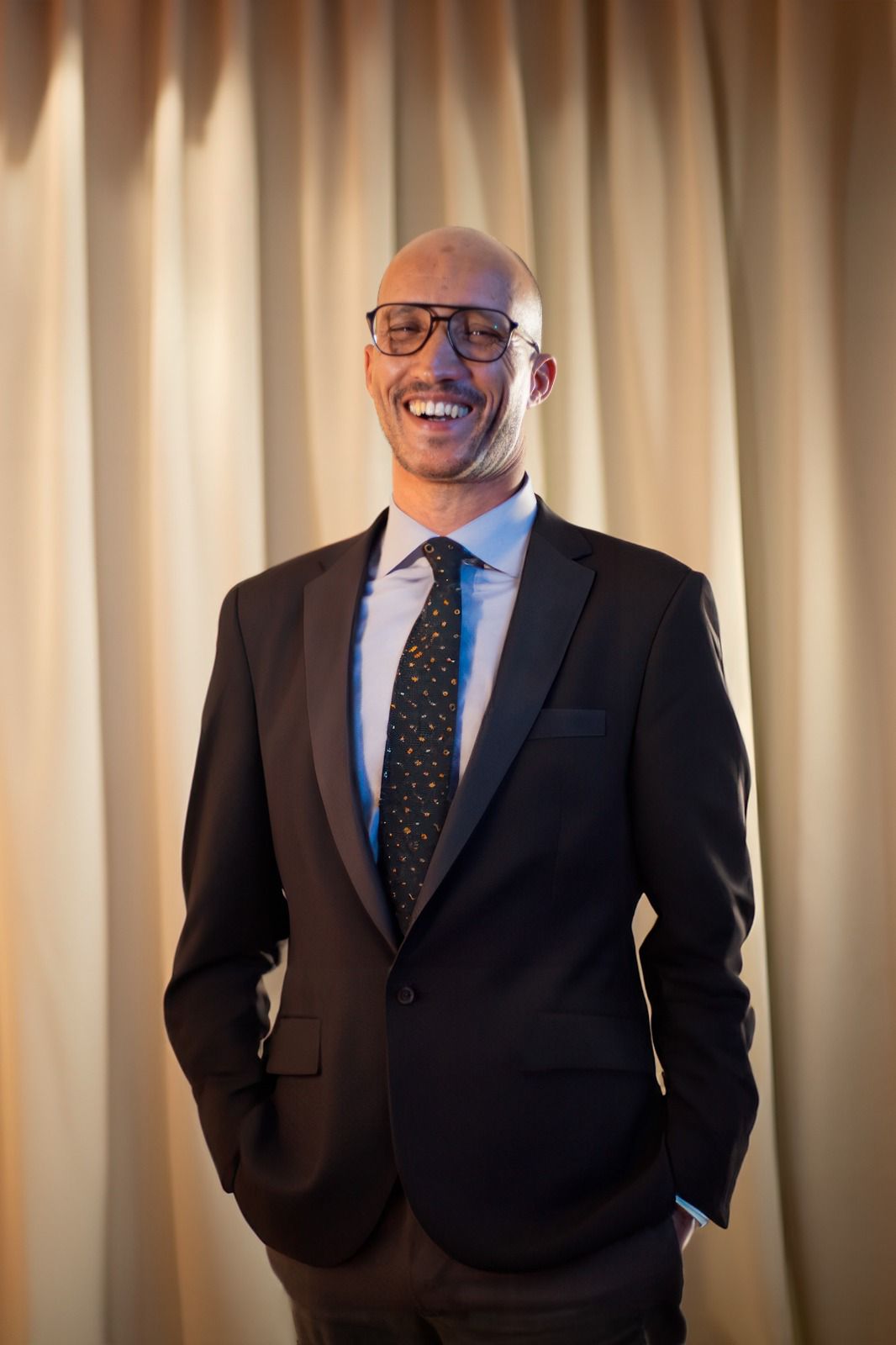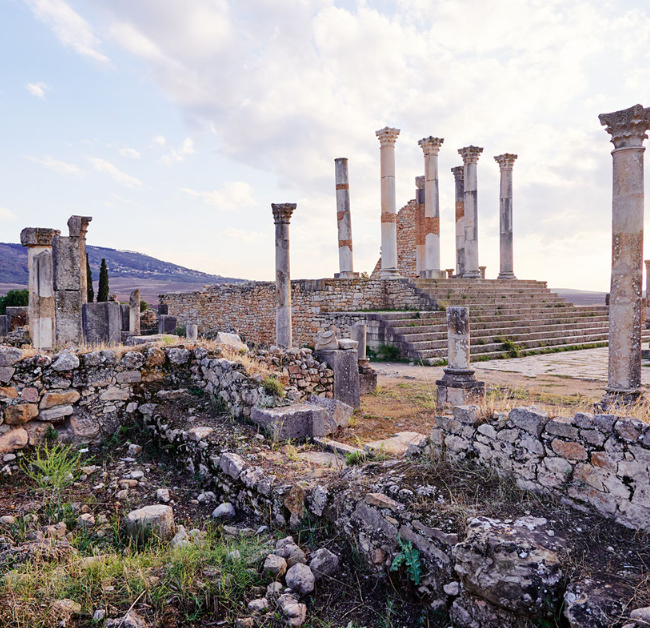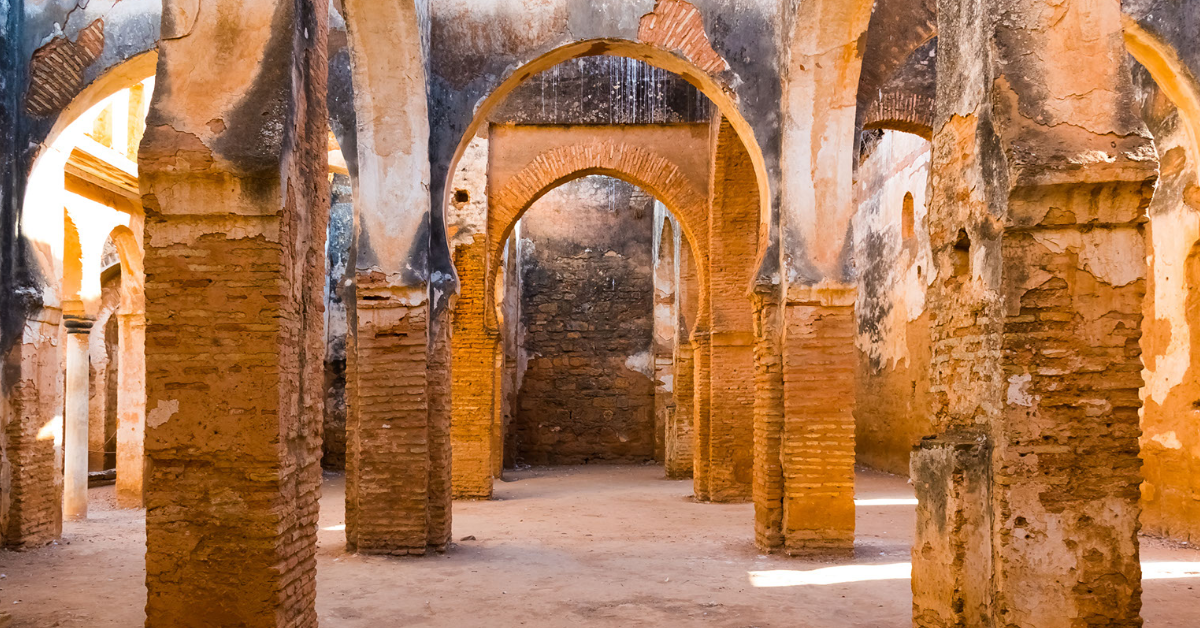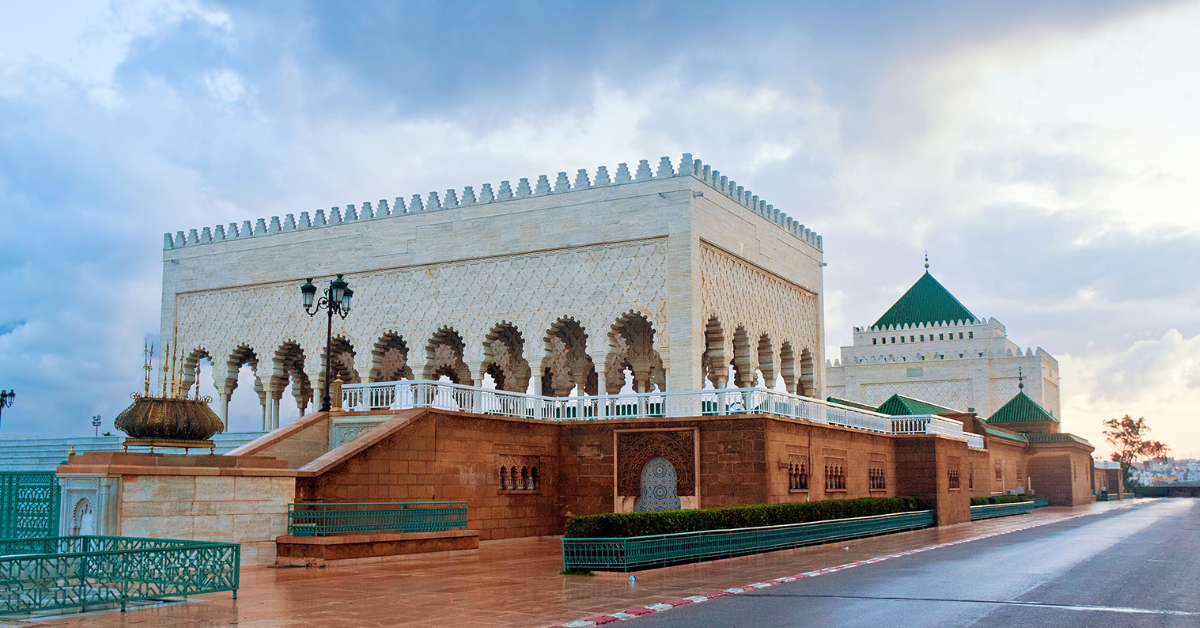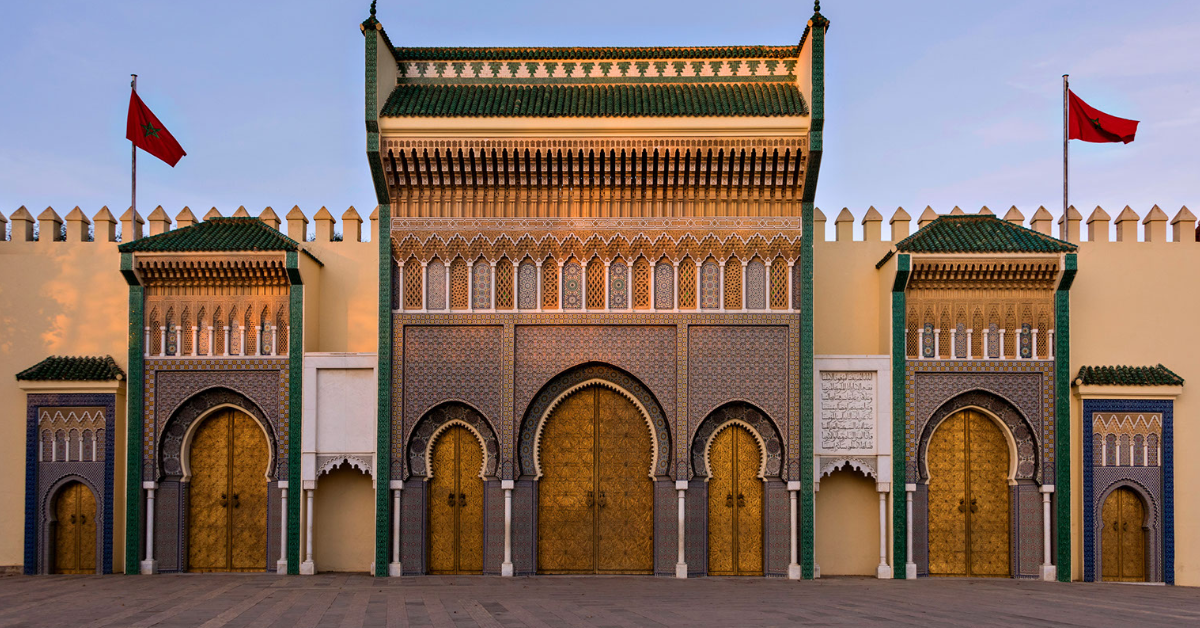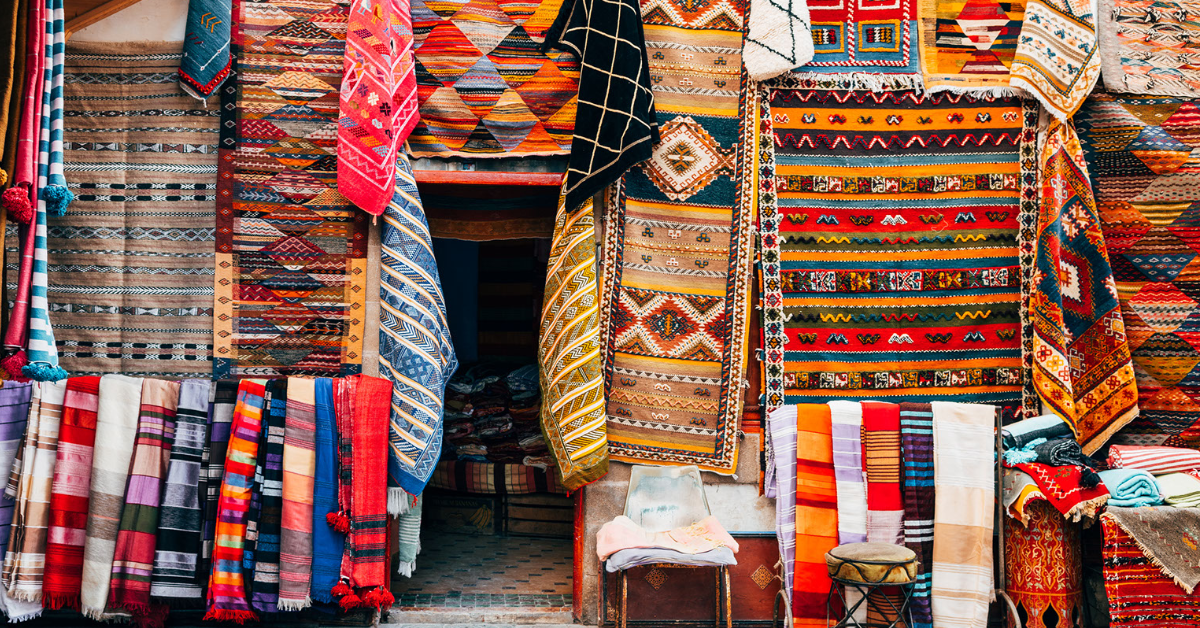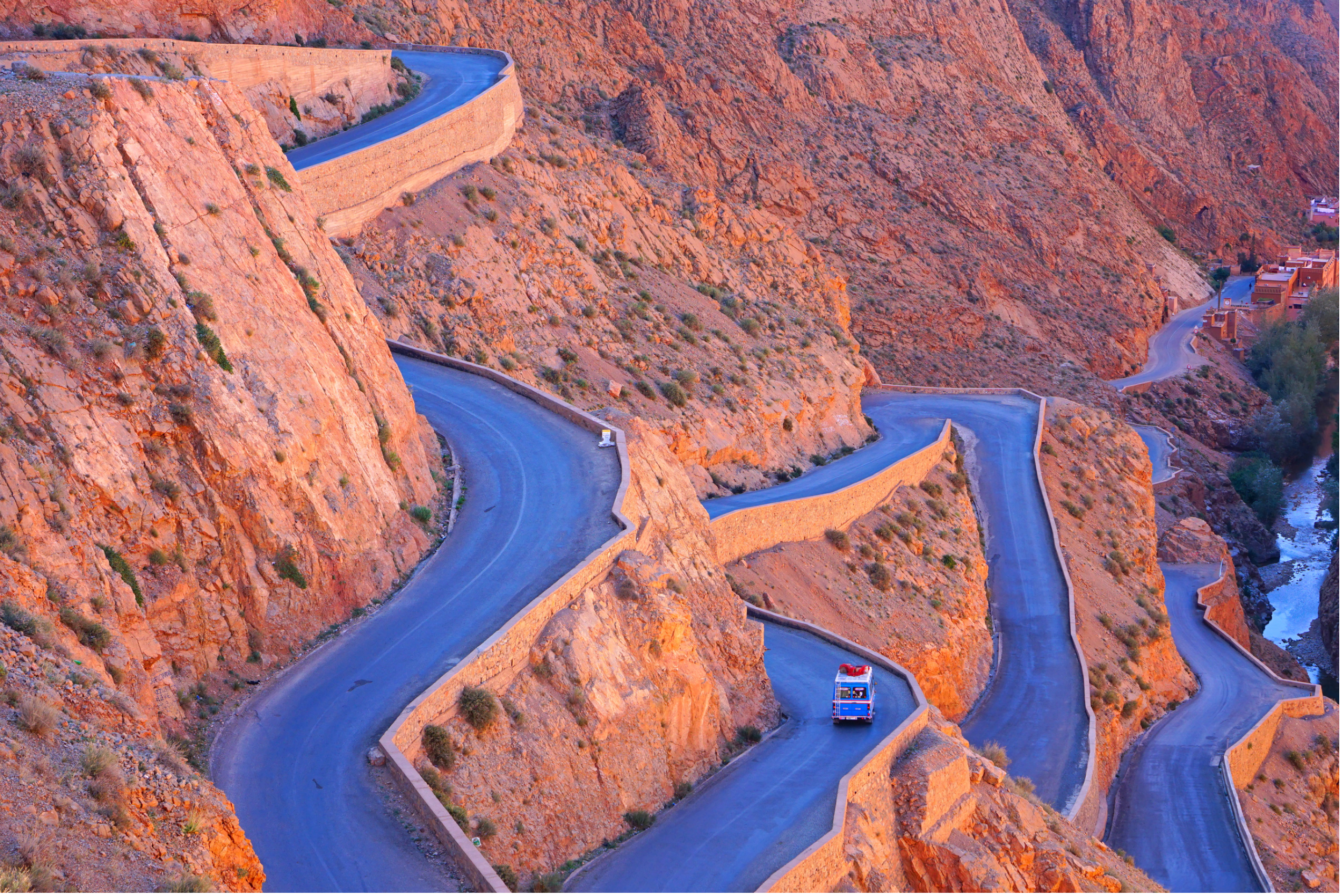Essential Morocco Kasbahs and Palaces 14-Day Tour
Essential Morocco Kasbahs and Palaces 14-Day Tour
At AFC Morocco Tours, we pride ourselves on creating unforgettable memories by taking you beyond the well-trodden paths to discover the true spirit of Morocco. Here are a few exciting experiences you can add to your journey for a more immersive, authentic, and personalized adventure:
Morocco offers a diverse array of landscapes, right from coastal towns to deserts, and cosmopolitan cities to mountainous regions. It is famous for the Sahara Desert where one can camp under the moonlit tents, and equally well known for the Atlas Mountains that offer picturesque views of the Atlantic Ocean as well as high valleys. Not to mention the mausoleums, mosques, and medinas that are a wonderful display of stunning architecture.
Explore Morocco Kasbahs and Palaces 14 Days Tour will acquaint you with all of the above and help you discover the land that was once ruled by the Romans and then the Berbers and is now turning into a global cosmopolitan.
Departure
CasablancaDeparture Time
Depends on Your Arrival FlightReturn Time
Depends on Your Return FlightDress Code
CasualIncluded
Camel trek (one camel per guest)Entrance FeesMeals as per itineraryNew air-conditioned vehicle 4WD or Minivan/Mini BusOvernight in Desert Luxury CampPick-up and Drop Off ServiceProfessional driver/Tour guide during the tourNot Included
FlightsLocal guides in major cities: Fes; Marrakech, Casablanca mosque, Volubilis; Essaouira, Atlas MountainsLunches and drinks unless specifiedPersonal expenses
Tour Plan
Day 1: Casablanca Arrival
After arriving in Casablanca, the guided tour will take you to Hassan II Mosque, where you'll be welcomed by the city's modernity blended with historic charm. You can visit the iconic Hassan II Mosque, one of the largest and most impressive mosques in the world, situated on the edge of the Atlantic Ocean. Its intricate architecture, with detailed mosaics and woodwork, is a sight to behold.
After a brief tour of the mosque, explore the vibrant Corniche area along the coast, perfect for a leisurely walk by the sea as the sun sets. If time permits, you may want to visit the art-deco streets of downtown Casablanca or relax at one of the chic cafés overlooking the water
Day 2: Casablanca – Rabat – Meknes
Get a guided tour of Morocco’s Imperial city Rabat and visit the Mausoleum of the erstwhile Sultan of Morocco Mohammed V. Follow it up with a visit to the Roman ruin called the Chellah, which is a short walk from the medina. You will have some time in the afternoon, during which we recommend visiting the trading port of Sale. It’s connected to Rabat by a bridge, and still has remnants of its 16th to 19th-century cultural heritage. After Rabat City Tour, we will leave for Meknes, to visit the imperial city of Meknes, and learn about its history. Also enjoy the vibrant nightlife of this imperial turned modern city. Overnight in Meknes
Day 3: Meknes, Volubilis – Fes
The driver will pick you from the hotel and drive you to Fez, one of the largest cities of Morocco. You will pass the Roman city of Volubilis and the imperial city of Meknes on your way to Fez. Volubilis was the ancient capital of Morocco and is worth a visit, After exploring this World Heritage site, we will head to Fes, Once in Fes, Visit the ancient center of learning and religion, which today is one of the most popular tourist of Morocco Overnight in Fes
Day 4: Exploring Fes
You will have the entire day to explore the city of Fez. You can visit the grand mosques, mausoleums of old rulers, Chouara Tannery which is several centuries old, and see the city walls and gates. Some of the mosques may not be open to non-Muslims. However, you can always admire the architecture from the outside. During evenings, you can enjoy a good time by strolling in the marketplace, also known as Souks.
Fes, also spelled Fez, is a city in Morocco known for its historical sites and cultural significance. Some notable historical sites in Fes include:
- The Medina of Fes el-Bali, a UNESCO World Heritage Site dating back to the 9th century. It is one of the oldest and best-preserved medieval cities in the world, with narrow winding streets, traditional markets, and many religious and cultural landmarks.
- The Bou Inania Madrasa is a 14th-century Islamic school and architectural masterpiece known for its ornate tilework and intricate stucco decoration.
- The Dar Batha Museum, which was once a palace now houses a collection of Moroccan art and artifacts, including ceramics, textiles, and metalwork.
- The Royal Palace of Fes dates back to the 14th century and was once the residence of the Moroccan monarchs. It is not open to the public but can be viewed from the outside.
- The Tombs of the Merinids, a necropolis located on a hill outside of the city, contains the tombs of the Merenid dynasty, which ruled Morocco during the 13th and 14th centuries.
Day 5: Fes Cooking Class experience
Moroccan cuisine is a rich and diverse blend of flavors, textures, and influences. From the tangy and spicy tagines of the north to the sweet and savory pastries of the south, Moroccan food is a feast for the senses.
One of the best ways to experience Moroccan cuisine is by taking a cooking workshop. These workshops are led by experienced Moroccan cooks who will teach you the secrets of traditional Moroccan dishes, from the preparation of the ingredients to the final presentation.
During a typical cooking workshop, you will learn to make a variety of traditional Moroccan dishes, such as couscous, tagine, and pastilla. These dishes are made with a combination of spices, herbs, and other flavorful ingredients, including saffron, cumin, and cinnamon. You will also learn about the traditional cooking techniques used in Moroccan cuisine, such as slow cooking and baking in clay vessels.
Another important aspect of Moroccan cuisine is the use of fresh, locally sourced ingredients. Many cooking workshops take place on a farm or in a local market, where you can learn about the different types of fruits, vegetables, and meats used in Moroccan cooking. You will also learn how to choose the best ingredients for your dishes and how to store them properly to maintain their flavor and freshness.
In addition to learning how to cook traditional Moroccan dishes, you will also learn about the cultural and historical context of Moroccan cuisine. You will learn about the role of food in Moroccan society and the different customs and traditions surrounding meals.
Cooking workshops are a great way to immerse yourself in the world of Moroccan cuisine and culture. They are a fun and interactive way to learn about new flavors, ingredients, and cooking techniques. Whether you are a beginner or an experienced cook, you are sure to have a great time and come away with a deeper understanding of Moroccan cuisine.
Day 6: A Journey from Fes to the Sahara
Our adventure begins early in the morning, as you depart from the ancient city of Fes, heading towards the stunning desert landscape of Merzouga. This full-day journey will take you through a diverse range of landscapes, from the lush green forests of the Middle Atlas to the dramatic barren landscapes of the Sahara.
Morning: Fes to Ifrane and the Cedar ForestsIfrane (1.5 hours from Fes):Your first stop is in the alpine town of Ifrane, often called the "Switzerland of Morocco" due to its European-style architecture and cool climate. Take a short stroll through its peaceful streets, admire the unique architecture, or relax in the well-manicured parks. It’s a refreshing contrast to the bustling medinas of Fes. Cedar Forest of Azrou (30 minutes from Ifrane):Continue your drive through the Middle Atlas Mountains, arriving at the majestic cedar forests near Azrou. Here, you can take a quick break to walk among the towering cedar trees and meet the local Barbary macaque monkeys that inhabit the area. The fresh mountain air and serene surroundings offer a perfect moment of calm before continuing your journey. Midday: Crossing the Middle AtlasMidelt (2 hours from Azrou):After descending from the Middle Atlas, you’ll pass through the Berber town of Midelt, which lies in the shadow of the High Atlas Mountains. Known as the "apple capital" of Morocco, Midelt is a great place to stop for a traditional Moroccan lunch. Enjoy a hearty tagine or a flavorful Berber omelet before continuing your trip.Afternoon: Ziz Valley and the Tafilalt OasisZiz Valley (1.5 hours from Midelt):As you drive through the Ziz Gorge, the landscape dramatically changes, revealing the lush Ziz Valley, an oasis of date palms nestled between barren hills. You’ll pass through Errachidia, a desert gateway town, and drive along the palm-lined river that provides life to this arid region. This scenic stretch of road is perfect for photography, offering panoramic views of the palm groves and mud-brick villages.Late Afternoon: Arrival in MerzougaErfoud (1 hour from Ziz Valley):The desert town of Erfoud marks the beginning of the true desert experience. Known for its fossils and dates, Erfoud offers a glimpse of what life is like on the edge of the Sahara. From here, you’ll continue on to the village of Merzouga, which lies at the base of the towering Erg Chebbi dunes. Merzouga (45 minutes from Erfoud):You’ll arrive in Merzouga by late afternoon. As the sun begins to dip, you can embark on a thrilling camel trek into the desert, riding across the golden sand dunes as the colors shift with the setting sun. Reach your desert camp just in time to witness the sun setting over the dunes—an unforgettable moment in the heart of the Sahara. Evening: Desert Camp ExperienceAfter an exhilarating day of travel, settle into a traditional Berber desert camp. Enjoy a delicious dinner under the stars, accompanied by live Berber music around a campfire. The clear desert sky offers unparalleled stargazing opportunities, allowing you to end your day with a magical desert night.Day 7: Explore the desert wonders and visit the nomads
This morning will give you a chance to learn about the traditions and customs of the Berbers, the indigenous to Morocco for centuries. The journey through the sand dunes will make you encounter the Todra and the palm groves of southern Morocco.
The South East region of Morocco is home to many indigenous tribes, each with its own unique culture and traditions. These tribes have lived in the region for centuries and have developed a deep connection with the land, their families, and their communities. In this article, we'll take a closer look at some of the most notable tribes in the southeast of Morocco and explore the rich history and culture of each one.
Sunrise Over the Dunes
Your day begins before dawn, as the first rays of sunlight gently kiss the towering sand dunes. Climb to the top of one of the tallest dunes for a breathtaking sunrise. The shifting hues of gold, orange, and pink paint the desert in magical colors, making this a truly peaceful and awe-inspiring moment. Afterward, enjoy a traditional Berber breakfast at your camp, featuring freshly baked bread, honey, olives, and mint tea.
Midday: Visit a Nomadic Berber Family
As you continue your journey, head toward a traditional Berber nomadic family settlement in the desert. These nomads have lived in the Sahara for generations, moving with the seasons and adapting to the harsh environment. Spend time with the family in their tent, learning about their simple yet resilient way of life, from how they make their own food and gather water to their deep connection with the land.
Enjoy a cup of mint tea—an important symbol of hospitality in Berber culture—and perhaps sample freshly baked bread prepared in the traditional desert way. The encounter provides an intimate glimpse into the rich cultural heritage that thrives in the Sahara.
Afternoon: Explore the Gnawa Village of Khamlia
After visiting the nomads, return to Merzouga and make your way to the nearby village of Khamlia, home to the descendants of Sub-Saharan African slaves. Here, you'll be welcomed by the local Gnawa community, famous for its vibrant and spiritual music. Experience an authentic Gnawa performance, where drums, castanets, and chanting create a rhythmic and hypnotic atmosphere. The Gnawa music, with its deep spiritual roots, reflects the rich cultural diversity of the desert and is an unforgettable part of your visit.
Sunset and Relaxation
As the day winds down, make your way to the perfect spot for a Sahara sunset. Watching the sun set behind the dunes is a serene experience, as the desert’s golden colors transform into deep reds and purples. The play of light and shadow across the dunes creates an ethereal landscape, offering an ideal moment for reflection and photography.
Evening: Berber Dinner and Starry Skies
After a full day of adventure, return to your desert camp for a delicious, freshly prepared Berber dinner. Sit around the fire, enjoying traditional dishes like a flavorful tagine or couscous, accompanied by locally sourced dates and mint tea. The evening continues with a lively drumming session under the stars, where you can join the local Berbers in their music and dancing.
Day 8: Merzouga - Todra Gorges - Dades Valley - Ouarzazate
The journey from Merzouga to Ouarzazate is a spectacular adventure through Morocco's most stunning landscapes. As you leave the desert dunes of Merzouga, the road takes you through the vast, rocky desert before reaching the Todra Gorges, one of the country’s most dramatic natural wonders. These towering canyon walls, rising up to 300 meters, create a narrow passage where you can take a refreshing walk along the cool riverbed, surrounded by awe-inspiring cliffs.
Continuing the journey, you’ll wind your way through the Dades Valley, often called the "Valley of a Thousand Kasbahs." This fertile valley is known for its lush palm groves, ancient mud-brick villages, and striking red rock formations. The serpentine roads of the valley offer stunning panoramic views, where you can stop to admire the scenic landscapes, explore traditional Berber villages, or visit one of the historic kasbahs that dot the valley.
As you approach Ouarzazate, the gateway to the Sahara and Morocco's film capital, the landscape transitions from green valleys to arid plains dotted with kasbahs. Known for its cinematic desert views and the famous Kasbah Ait Benhaddou, Ouarzazate is where the desert meets culture and history, providing a perfect end to this breathtaking journey.
Day 9: Ouarzazate - Ait Benhaddou Kasbah - Marrakech
Today you will begin a new journey on a scenic journey from Ouarzazate to Marrakech, a route filled with rich history and breathtaking landscapes. Your adventure begins in Ouarzazate, the gateway to the desert and a hub of Moroccan cinema. As you leave the city behind, the stark desert gradually gives way to lush valleys and rocky cliffs, leading you toward one of Morocco’s most iconic landmarks—the Ait Benhaddou Kasbah.
Ait Benhaddou, a UNESCO World Heritage Site, is an ancient fortified village made of red clay and straw. It stands majestically along the former caravan route between the Sahara and Marrakech, offering a glimpse into traditional Berber architecture. As you walk through its winding alleys, you can explore the maze of homes and buildings that have served as the backdrop for many famous films. From the top of the kasbah, panoramic views of the surrounding desert and Atlas Mountains make for an unforgettable experience.
Continuing our journey, you’ll ascend the winding roads of the Tizi n'Tichka Pass, the highest in North Africa. The landscape shifts dramatically, with stunning mountain views, terraced fields, and small villages dotting the route. By the time we reach Marrakech, the vibrant Red City, you’ll have experienced the best of Morocco’s diverse landscapes and rich heritage, from the historic kasbahs to the towering Atlas peaks.
Day 10: Marrakech Guided City Tour
Today, we will discover the vibrant essence of Morocco with a guided city tour of Marrakech, known as the "Red City" for its terracotta-colored buildings and walls. Begin your journey at the heart of the city, the Jemaa el-Fnaa square, a lively hub of activity. By day, this UNESCO-listed square buzzes with juice vendors, snake charmers, and traditional storytellers. As evening falls, it transforms into a feast for the senses, with food stalls offering mouthwatering Moroccan delicacies. A walk through the square provides a true introduction to the city’s pulse and energy.
Next, explore the enchanting Medina, a maze of narrow alleyways lined with colorful souks (markets). Here, you’ll find everything from spices and textiles to handcrafted jewelry and leather goods. As your guide navigates through the bustling market, you’ll have the chance to visit the iconic Koutoubia Mosque, the largest in Marrakech, known for its stunning 12th-century minaret. From there, step into the Bahia Palace, a stunning example of Moroccan architecture with its ornate ceilings, tranquil courtyards, and intricate mosaics.
Finish your tour with a peaceful visit to the Majorelle Garden, an oasis of calm away from the city’s hustle. Originally designed by the French painter Jacques Majorelle and later restored by Yves Saint Laurent, the garden’s vibrant blue buildings and exotic plants provide a perfect retreat. As we stroll through its shaded pathways, take in the beauty of the art deco style blended with Moroccan influences. End our day at a rooftop café, sipping on traditional mint tea while soaking in panoramic views of the bustling medina and the distant Atlas Mountains.
Day 11: Marrakech Relaxing Day SPA and Henna Tattoo Experience
SPA: Traditional Hammam and Massage
Morocco is known for its rich culture, history, and traditions. One such tradition is the Hammam, a public bath and spa that has been a part of Moroccan life for centuries. In this article, we will take a closer look at the Moroccan Hammam experience and the traditional massage that is part of it.The Moroccan Hammam: A Journey of Self-CareA visit to the Hammam is more than just a bath. It is a journey of self-care and relaxation that is steeped in tradition. The Hammam is a place where Moroccans come to cleanse their bodies, unwind, and socialize. The experience begins with soaking in warm water, which opens the pores and prepares the skin for exfoliation.Exfoliating the skin is a key aspect of the Hammam experience. A traditional Moroccan scrub is used to remove dead skin cells and improve circulation. The scrub is performed by a masseuse or Hammam attendant, who will use their hands and a Kessa glove to massage the skin. This process not only leaves the skin feeling smooth and refreshed but also helps to improve circulation and promote relaxation.The Traditional Moroccan MassageAfter the scrub, the next step in the Hammam experience is the massage. The massage is typically performed with traditional Moroccan soap, which is made from natural ingredients like olive oil and eucalyptus. The soap is lathered on the skin, and the masseuse uses long, sweeping strokes to massage the muscles and promote relaxation. The massage is not only physical but also spiritual, as it is believed to cleanse the mind and body of negative energy.Henna Art Tattoo
In Morocco, henna is typically used for special occasions such as weddings, births, and religious celebrations. The intricate designs and patterns applied to the skin using henna are meant to bring good luck, protection, and blessings to the person wearing them.Henna is also used as a form of self-expression and creativity. Women and girls often adorn their hands and feet with intricate henna designs, showcasing their skill and personal style.How Moroccan Henna is AppliedThe process of applying henna in Morocco is an art form in itself. The henna paste is made by grinding the henna leaves into a fine powder and mixing it with lemon juice and essential oils to create a thick paste. The paste is then applied to the skin using a small cone or a brush and left to dry for several hours.The designs applied can range from simple, single-color patterns to elaborate, multi-colored designs that cover the entire hand or foot. The designs often reflect the cultural heritage and personal tastes of the person wearing them.Moroccan Henna TodayIn recent years, henna has become increasingly popular around the world, and Morocco is no exception. The country has embraced the resurgence of interest in henna, and the tradition is alive and well.Visitors to Morocco can experience the art of henna for themselves by visiting local markets or booking an appointment with a henna artist. The process is safe, non-toxic, and offers a unique and beautiful way to experience Moroccan culture and tradition.Day 12: Marrakech to Essaouira
After breakfast, we will leave Marrakech around 8 AM and drive to Essaouira was founded by the Berbers in the 18th century, and was later occupied by the Portuguese and the Moroccan Alaouite dynasty. It was once a major port for exporting goods such as wool, wheat, and timber, and was also a center for arts and culture. In the 20th century, Essaouira experienced a revival as a tourist destination, attracting visitors from around the world.
Medina: The medina (old town) of Essaouira is a UNESCO World Heritage Site, known for its narrow streets, colorful houses, and artisanal workshops. Visitors can explore the medina and browse the stalls of the souk (market) to find handmade crafts, jewelry, and Moroccan ceramics.
Beaches: Essaouira is home to several beautiful beaches, including Plage Sidi Kaouki, Plage Moulay el Hassan, and Plage d'Imsouane. These beaches offer a range of activities, including swimming, surfing, and kiteboarding.
Fortified Walls: The city is surrounded by fortified walls, which were built in the 18th century to protect the city from pirates. Visitors can walk along the walls and enjoy views of the city and the ocean.
Museums: There are several museums in Essaouira, including the Museum of Moroccan Art and the Museum of Photography. These museums offer a chance to learn more about the history and culture of Morocco.
Cultural Events: Essaouira hosts several cultural events throughout the year, including the Gnaoua World Music Festival and the Essaouira International Film Festival. These events provide an opportunity to experience traditional Moroccan music and film.Day 13: Exploring Marrakech craftsmen and artisans workshops tour
During this half-day heritage tour of Marrakech, we will experience the rich heritage of Marrakech on a half-day tour dedicated to discovering the city's talented artisans and craftsmen. Your journey begins in the bustling Medina, where we'll visit various workshops and studios showcasing traditional Moroccan craftsmanship. Meet skilled artisans as they demonstrate their techniques in pottery, weaving, and leatherwork, giving us an intimate glimpse into the time-honored practices that have been passed down through generations.
Explore the vibrant souks, where we can find unique handmade products such as intricate mosaics, beautiful textiles, and stunning metalwork. Our knowledgeable guide will share insights into the cultural significance of each craft and the stories behind the artisans. This immersive experience not only highlights the artistic talents of Marrakech but also supports local businesses and preserves traditional crafts.
As we wander through the colorful market streets, we'll have the opportunity to purchase one-of-a-kind souvenirs directly from the makers themselves, ensuring that our visit contributes to the preservation of these cherished skills. This artisan-focused tour is a perfect way to connect with Marrakech's rich cultural tapestry while supporting the local community.
Day 14: Return Flight
- Stargazing in the Sahara
- Explore the Majestic Gorges of Dades and Todra
- Culinary Journey: Cooking with the Locals
- Atlas Mountains Village Stay
- Visit a Women's Cooperative
- Sunset Camel Ride and Desert Camping
- Hammam and Spa Experience
What to pack to Morocco - Things to should know before your travel to Morocco - Travel tips
More and more people are visiting Morocco every year. It’s a beautiful country. If you plan on going, here are a few pointers to help you prepare for your trip.- Dress Appropriately
- Currency and Cost
- ATMs.
- Keep Correct Change with You
- Tipping
- Be Wary of Local Guides.
- Stay Away from Strangers Offering Free Tours or Directions.
- Fridays are Holy Days and Prepare for Holidays
- Careful What Water You Use
- Pack Some Immodium
- Watch Your Pockets
- What Language Do They Speak?
- Hello(Peace Be With You): Salam Alikome (salaam a eleikum)
- Thank You:Choukran (shokran)
- No Thank You: La Choukran (la shokran). This one is useful when you have a bunch of street vendors hassling you to buy something.
- Watch Out: Although you won’t use this yourself, you’ll most likely hear this in the medinas or souks (outdoor markets). It will be said by locals coming by with a mule, motorcycle, or cart and is a warning to move to the side.
- Visiting Mosques:
- Do I Need a Visa or Vaccines?
- Ask Before Taking Photos (And You May Have to Pay).
- Souvenirs to Bring Home:
****************************

